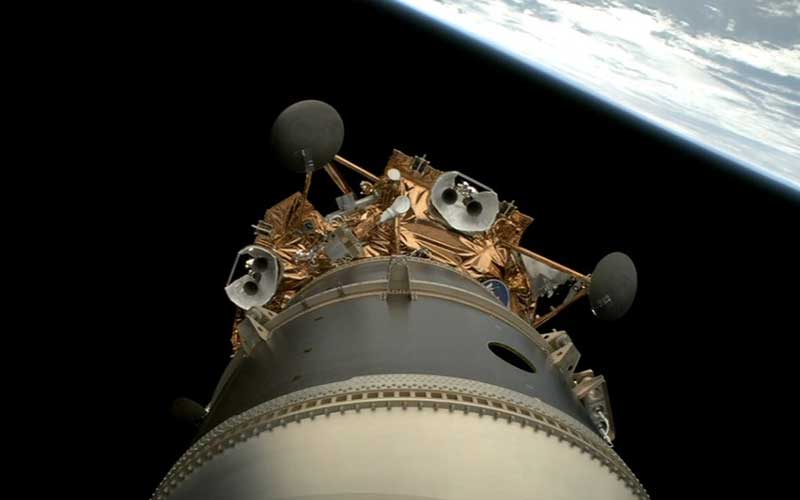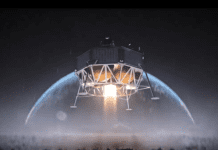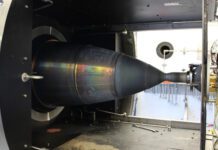
The LEROS 4 rocket engine, developed by Nammo UK in Buckinghamshire, has successfully ignited in space, powering the Firefly Aerospace Blue Ghost lunar lander.
Blue Ghost was launched aboard a SpaceX Falcon 9 on 15 January. The lander is carrying 10 science and technology demonstration payloads for NASA as part of the agency’s Commercial Lunar Payload Services programme.
On 19 January, Firefly Aerospace announced that the company’s Blue Ghost lunar lander had successfully fired its RCS thrusters and main engine for the first time, coming to within 2 millimetres per second of its target delta-V. The planned burn increased the spacecraft’s perigee, the point at which the spacecraft is closest to Earth in its orbit.
The main engine powering the Blue Ghost lunar lander’s journey to the Moon is the LEROS 4 from Nammo UK. The standard LEROS 4 engine produces between 900 and 1,100 newtons of thrust. However, Blue Ghost is equipped with the LEROS 4-ET (Extra-Thrust) variant. Firefly has contracted Nammo UK to deliver two LEROS 4-ET engines, one of which is now aboard the lunar lander orbiting Earth, preparing for its trip to the Moon. Additionally, the company told European Spaceflight in April 2024 that it expects to receive an order for a third engine.
In response to Firefly’s update that its LEROS 4 engine had been successfully fired in space, Nammo UK said in a statement on LinkedIn that it was “a massive achievement” and that it validated “years of hard work invested in this engine.”
What’s next for Blue Ghost?
The Blue Ghost lunar lander will remain in Earth’s orbit for approximately 25 days before performing a translunar injection manoeuvre, reaching lunar orbit approximately four days later. Over the next 16 days in lunar orbit, the lander will calibrate its vision and navigation system and move into a low lunar orbit. It will then attempt to land in the Mare Crisium region of the Moon on 2 March.




